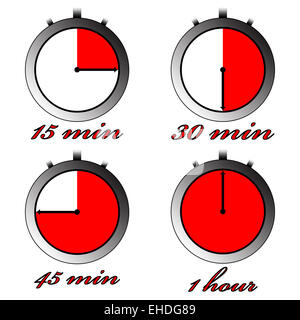

In 2009, the Watch Museum of Le Locle renewed the tradition and launched a new chronometry contest based on ISO 3159 certification. The observatory competitions ended with the advent of the quartz watch movement, in the late 1960s and early 1970s, which generally has superior accuracy at far lesser costs. These observatory chronometers were then sold to the public for normal usage as wristwatches, and some examples may still be found today. However, in 19, Girard Perregaux manufactured approximately 670 wristwatches with the Calibre 32A movement, which became Observatory Chronometers certified by the Neuchatel Observatory, while in 1968, 19 Seiko had 226 wristwatches with its 45 Calibres certified. They were useful only for accuracy competitions, and so never were sold to the public for usage. Most observatory chronometers had movements so specialized to accuracy that they could never withstand being used as wristwatches in normal usage. Because only very few movements were ever given the attention and manufacturing level necessary to pass the Observatory standards, there are very few observatory chronometers in existence. When a movement passed the observatory, it became certified as an observatory chronometer and received a Bulletin de Marche from the Observatory, stipulating the performance of the movement. The observatory testing regime typically lasted for 30 to 50 days and contained accuracy standards that were far more stringent and difficult than modern standards such as those set by COSC. The Neuchâtel Observatory, Geneva Observatory, Besancon Observatory, and Kew Observatory are prominent examples of observatories that certified the accuracy of mechanical timepieces. Once mechanical timepiece movements developed sufficient precision to allow for accurate marine navigation, there eventually developed what became known as "chronometer competitions" at astronomical observatories located in Europe. The marine chronometer is no longer used as the primary means for navigation at sea, although it is still required as a backup, since radio systems and their associated electronics can fail for a variety of reasons. These culminated in the development and implementation of global satellite navigation systems (GSN- GPS) in the latter half of the 20th century. Consol), LORAN(-A and -C), Decca Navigator System and Omega Navigation System) that significantly reduced the need for positioning using an onboard marine chronometer. Early in the 20th century the advent of radiotelegraphy time signals supplemented the onboard marine chronometer for marine and air navigation, and various radio navigation systems were invented, developed, and implemented during and following the Second World War (e.g., Gee, Sonne (a.k.a. From then on, an accurate chronometer was essential to open-ocean marine or air navigation out of sight of land.

#Cronometer gold features series#
This was the first of a series of chronometers that enabled accurate marine navigation.

The marine chronometer was invented by John Harrison in 1730. The term chronometer is also used to describe a marine chronometer used for celestial navigation and determination of longitude. The term chronometer was coined by Jeremy Thacker of Beverley, England in 1714, referring to his invention of a clock ensconced in a vacuum chamber. Outside Switzerland, equivalent bodies, such as the Japan Chronometer Inspection Institute, have in the past certified timepieces to similar standards, although use of the term has not always been strictly controlled.

In Switzerland, timepieces certified by the Contrôle Officiel Suisse des Chronomètres ( COSC) may be marked as Certified Chronometer or Officially Certified Chronometer. 1904)Ī chronometer (from Ancient Greek χρονόμετρον Literally, a measurer of time) is an extraordinarily accurate timepiece, with an original focus on the needs of maritime navigation.


 0 kommentar(er)
0 kommentar(er)
